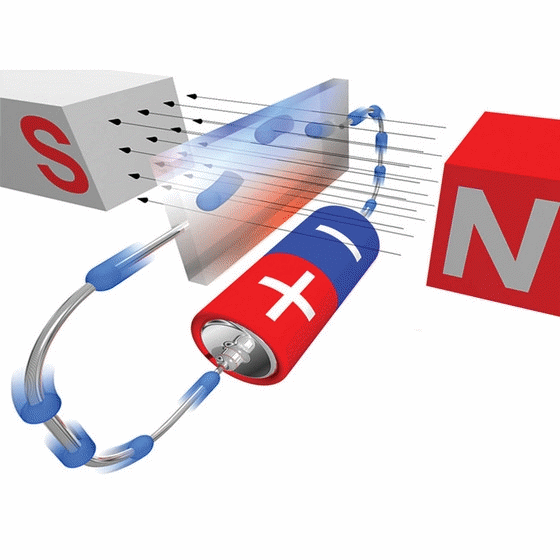 Hall Effect
Deflection of electrons in a conductor due to external magnetic field.
Hall Effect
Deflection of electrons in a conductor due to external magnetic field.
The production of a potential difference across a conductor carrying an electric current when a magnetic field is applied in a direction perpendicular to that of the current flow in a conductor.
The Hall effect is the result of the Lorentz force (F = q v × B) on the moving charges (current) as a result of the applied magnetic field. This transverse force tends to push the moving charges to one side of the conductor so that they are accumulated on the sides of the conductor.
When there is sufficient accumulation of charges on the side surfaces of the conductor, and hence a certain value of emf (Hall voltage) is developed across the faces transverse to the direction of the current, further build up of charges stops. This is because the force due to the electric field (produced by the Hall voltage) balances the force due to the magnetic field. Thus, the emf produced across the sides of the conductor cannot increase indefinitely for a given current and magnetic field.
Hall voltage is a direct measure of the mobility μ of the carriers involved, and that its sign or polarity
will change if the sign of the charges flowing changes. The Hall field results from the force exerted by the magnetic field on
the moving particles of the current.
Hall effect measurement forms an important tool for determining the nature of charge carriers in a given material, their density,
drift velocities, etc. Hall effect devices are used to detect magnetic field and to estimate its magnitude.